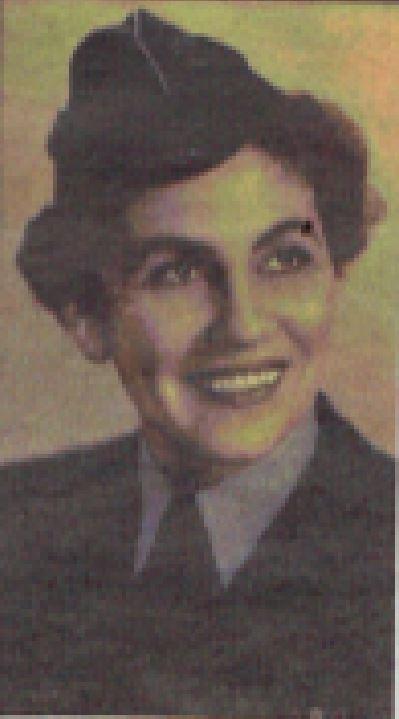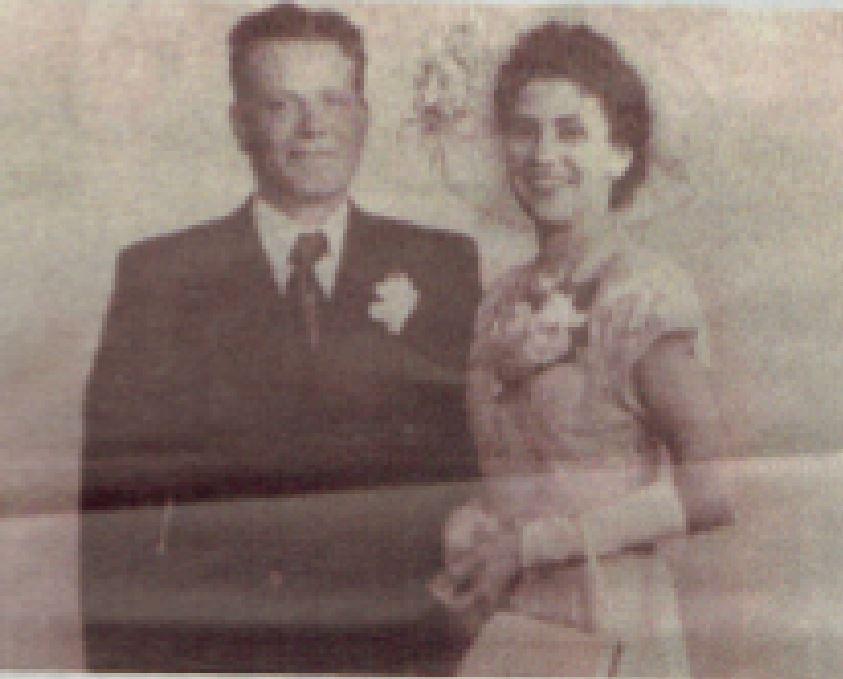'Gunner' Curley: a woman with a dream
Warning: this article contains images of deceased persons.

Elizabeth Anzac Lorraine Curley was born on Anzac Day 1925.
The significance of the date was not lost on her parents. They gave her the middle name Anzac in memory of those who had served during the First World War and had landed on Gallipoli in April 1915.
It was meant to have been “the war to end all wars”, but Elizabeth Curley soon found herself in the midst of a second world war.
At the age of 18, she volunteered for the Australian Women’s Army Service, becoming affectionately known as “Gunner” Curley for her work with the “big guns” on Rottnest Island.
Danusha Cubillo, a researcher at the Australian War Memorial, learnt of Gunner Curley’s story while conducting research into Indigenous service during the Second World War.
A proud Larrakia woman, Cubillo has been working with the Memorial’s Indigenous Liaison Officer Michael Bell to research and identify Indigenous Australians who have served or are still serving.
She was seconded to the Memorial from the Department of Defence through Defence Indigenous Affairs in 2020, to work on the Memorial’s Second World War Indigenous Service List.
Gunner Curley’s story is one of the many she has uncovered during her research.
“She was a pretty amazing woman,” Cubillo said.
“She was born in Subiaco, Western Australia, on the 25th of April 1925 and was the daughter of Horace John Bozal Curley and Margaret Louisa Maher.
“Her maternal grandfather, Aboriginal man John Maher, was part of Australia’s first Aboriginal cricket team. They were quite exceptional players, and they even went over to England to play.
“He was actually in the second iteration of that team, the Second New Norcia Cricket Team, in 1881, and was an opening bowler and prolific wicket-taker.”
His granddaughter, Elizabeth Curley, was one of the thousands of Indigenous Australians who volunteered during the Second World War, despite laws that often prevented them from doing so.
“She grew up in Sandstone and in the Wheatbelt area of Western Australia,” Cubillo said.
“There were only two schools in the district where she grew up, and travelling to and from school was often a dangerous task. There were many hazards – poisonous snakes, bull ants, swooping magpies, fallen logs, flooded creeks – and to get to the two schools you had to cross big creeks that were waist high on a child.
“The teachers would scold them for coming to school wet, but they couldn’t get to school any other way. These were kids who didn’t have a horse and buggy to take them to school, so they walked five kilometres there, and back again, which is some distance for a young child.”
Curley completed her high school years by correspondence because there was no high school in the area. She would study under a tree, collecting her work from the stations that her family stayed on while her father worked.
When the Second World War broke out, Curley was determined to do her bit for the war effort.
“She enlisted in Perth in September 1943, and joined a group of enthusiastic recruits from across Western Australia,” Cubillo said.
“Women were posted to the army, anti-aircraft batteries, search light batteries, records and finance offices, ordnance units, and training schools in order to gain qualifications in wireless operation and transport driving.
“Gunner Curley was stationed for a short time in Victoria, doing repair work on radios, and was posted near Fremantle, working on heavy artillery. And that’s where she was given the nickname, ‘Gunner’ Curley.”

Curley enlisted in the Royal Australian Air Force in the early 1950s, hoping to achieve the goal of serving in all three defence services.
“She had this idea, this dream of joining the army, navy and air force, but she was discharged from the air force when she met and married Arthur Eden Blanchett,” Cubillo said.
“At the time, married women were not allowed to be in the defence forces, so she didn’t get to achieve her dream of joining all three services, but she certainly came close.”
Curley left the air force on 11 December 1953 and was married on the 19th of December 1953, dressed in lavender, her favourite colour.
In 2013, she returned to Rottnest Island as a special guest to mark the 75th anniversary of artillery on the island.
Today, her name is one of more than 4,400 names list on the Australian War Memorial’s Second World War Indigenous Service List.
Cubillo is encouraging anyone with more information about Indigenous servicemen and servicewomen to contact the Memorial and share their stories.
“It’s about respect and giving that person their due,” she said.
“They fought for this country, and we want to acknowledge them for who they are, and be able to tell people proudly who this person was.”
Curley’s last ANZAC Day was on her 95th birthday. She celebrated her birthday in lockdown at a nursing home in Western Australia. She proudly wore her medals all day and cut a cake with nursing staff. Her family had to video call her, and wave to her from the window.
She died a few months later in August 2020, survived by five children, seven grandchildren and five great-grandchildren.
“Gunner Curley was a young woman who had a dream, and was proactive about wanting to do something with her life,” Cubillo said.
“Her story shows that if you’ve got a dream, you can work your way towards achieving it.
“And for Gunner Curley, that dream was to contribute to society by enlisting in the services to help defend her Country.”
Michael Bell is a Ngunnawal/Gomeroi man and the Indigenous Liaison Officer at the Australian War Memorial. If you have information about the contributions of people of Aboriginal and Torres Strait Islander descent who have served or are currently serving in the armed forces, or who have contributed to wartime efforts, he would love to hear from you. He can be contacted at Michael.Bell@awm.gov.au.